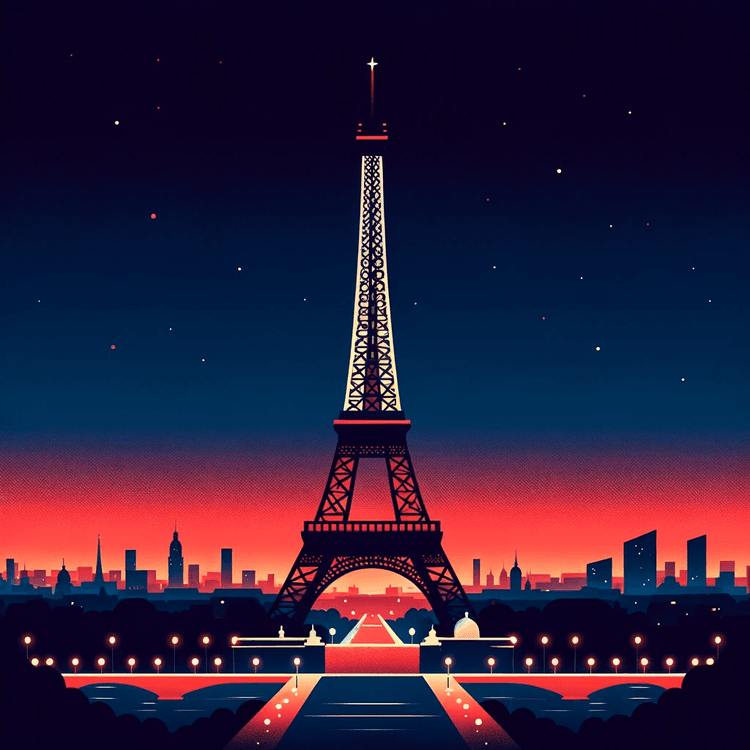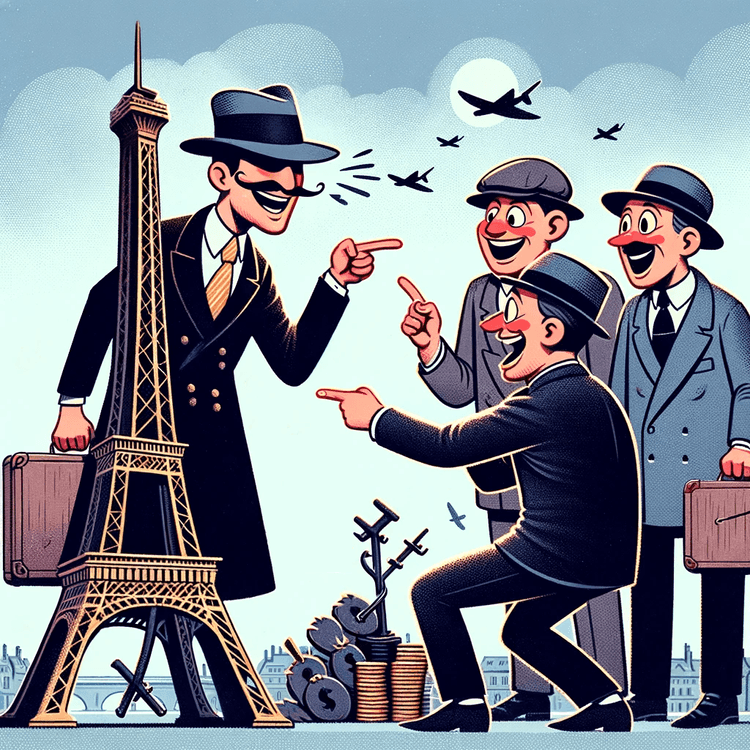
Uncover the captivating history and cultural significance of the Eiffel Tower

January 22, 2024
1/22/2024
Welcome to our blog! Today, we're going to take you on a journey through time and space, right into the heart of Paris, to discover one of the most iconic monuments in the world: the Eiffel Tower. A true symbol of elegance and architectural innovation, the Eiffel Tower is more than just a simple steel structure. It's a cultural icon that has redefined not only the Parisian urban landscape but also the global heritage. Having become a goal for tourists from all over the world, the Eiffel Tower is the most visited paid monument in the world.
The Eiffel Tower is the tangible expression of the human dream of touching the sky.
The beginnings of the Eiffel Tower: from ambition to reality
Born from the ingenuity of Gustave Eiffel and his team in 1889 for the Paris Universal Exposition, the Eiffel Tower symbolised the French ambition to showcase to the world an unmatched technological prowess. It was a bold and innovative declaration of France's cultural and technological progression. However, its birth was not without challenges: the structure's primary material, puddled iron, was then little used for large-scale constructions. It was a genuine technical challenge for Eiffel and his team to overcome.
Le saviez-vous ?
Did you know? The Eiffel Tower was built in just two years, two months, and five days, a true feat for the time!
Apart from the technical challenges, the Eiffel Tower also faced many criticisms from the public. Numerous were those who considered it to be a monstrosity and a threat to the urban landscape of Paris. Despite this, Eiffel persevered with his vision and eventually succeeded in creating a structure that is now a national and international symbol.
The architectural secrets of the Eiffel Tower
, In addition to being a construction feat, the Eiffel Tower is also a masterpiece of balance and ingenuity. Weighing about 7300 tons and majestically soaring over a square base of only 125 meters aside, it's a real architectural tour-de-force. It surpassed the Washington Monument to become the tallest structure in the world at the time, a title it kept for 41 years until the construction of the Chrysler Building in New York in 1930. This achievement was made possible thanks to a successful marriage between science and art.
Le saviez-vous ?
Did you know? The Eiffel Tower was never meant to be permanent. It was supposed to be dismantled after 20 years, but was saved thanks to its conversion into a broadcasting antenna.
The architectural details of the Eiffel Tower are just as fascinating. Every element, from the fastening bolts to the curved beams, were carefully designed and installed. When you look at the Eiffel Tower, you're not just looking at a monument, but a story of innovation, perseverance, and creativity.
The Eiffel Tower's global cultural impact
The Eiffel Tower is more than an engineering marvel. Over the years, it has transcended its role as a monument and has become an instantly recognisable symbol of France and an iconic landmark for Paris. Whether you're an artist seeking inspiration, a writer in search of a metaphor, or merely a tourist in pursuit of beauty, the Eiffel Tower has something to offer. It has inspired artists, writers, and filmmakers from around the world, becoming a symbol of love, freedom, and art.
With its imposing presence and elegant allure, the Eiffel Tower captivates the mind and heart of those who see it. Its cultural impact has surpassed all initial expectations and continues to resonate to this day.
Short Anecdote: The Amazing Sale of the Eiffel Tower!

Victor Lustig was a very clever man who did something extraordinary: he "sold" the Eiffel Tower! Yes, you heard right!
It was in 1925, in Paris. At that time, the Eiffel Tower was already a significant symbol of France, but Victor Lustig had a very bold plan. He was known to be a very smart con man. One day, he had a crazy idea: what if he made people believe he could sell the Eiffel Tower?
Victor started his plan by posing as a government official. He invited scrap metal dealers to a secret meeting and told them something surprising: the French government wanted to sell the Eiffel Tower! The reason? It was too expensive to maintain. Of course, this wasn't true, but Victor was very convincing.
One of the dealers, believing it was a unique opportunity, offered a lot of money to "buy" the Tower. Victor took the money and ran. It was one of the greatest sleights of hand in history!
This story shows how cunning Victor Lustig was. But beware, it's a story of deception. However, one can still admire the ingenuity and creativity of Victor (even if they were used in the wrong way!).
The Eiffel Tower, much more than a monument
Looking beyond its steel structure, we can see that the Eiffel Tower is not only an engineering masterpiece but also a symbol of human ambition and creativity. Each detail, every curvature of the Eiffel Tower tells a story of innovation, determination and cultural evolution.
We hope this article has given you a glimpse into the incredible history of the Eiffel Tower and its global cultural impact. Whether you're planning a visit or simply curious about its history, the Eiffel Tower deserves all the admiration and attention it receives.

Subscribe to our newsletter
Latest posts
Browse all posts
Subscribe to our newsletter
Stay informed and get a free video

